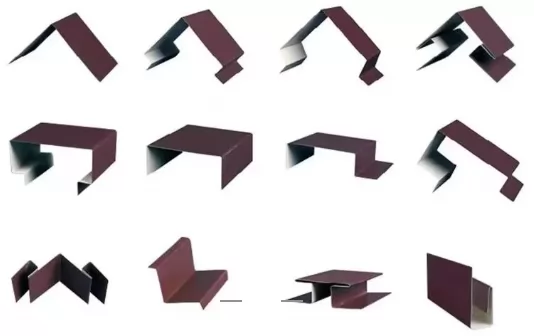The sheet metal bending radius is a value required in the sheet metal drawing, which is difficult to determine in the actual processing of the value. In fact, the bending radius of the sheet metal is related to the thickness of the material, the pressure of the bending machine, and the groove width of the bending mold. What is the relationship? Let's study it today:
In the actual sheet metal processing experience, when the general plate thickness is not more than 6mm, the bending inner radius of the sheet metal can be directly used as the radius when bending.
When the plate thickness is greater than 6 mm and less than 12 mm, the in-plate bending radius is generally 1.25 to 1.5 times the plate thickness. When the thickness of the plate is not less than 12 mm, the bending radius in the plate is generally 2 to 3 times the thickness of the plate.
When the bending radius is R = 0.5, the general sheet metal thickness T is equal to 0.5 mm. If a radius size greater than or less than the plate thickness is required, a special mold is required.
When the sheet metal drawing requires the sheet to be bent at 90°, and the bending radius is particularly small, the sheet should be machined first and then the sheet is bent. It is also possible to machine special upper and lower dies of the bending machine.
The bending radius of the sheet metal has a certain relationship with the width of the lower die groove of the bending die.
Through a large number of experiments in sheet metal processing, it is found that the groove width of the bending die has a certain relationship with the bending radius. For example, a 1.0mm plate is bent with an 8 mm groove width, so that the bend radius of the extrusion is ideally R1.
If the 20 mm groove width is used for bending, the upper plate is moved downward due to the bending, and the depth of the stretched sheet reaches a certain angle. Then we know that the 20 mm wide groove area is larger than the 8 mm wide groove area, and when the 20 mm wide groove is bent, the stretched area is also increased and the R angle is also increased.
Therefore, in the case of the bending radius of the plate, and without damaging the bending machine mold, we try to use a narrow groove to bend. Under normal circumstances, it is recommended to operate in accordance with the standard plate thickness and groove width of 1:8. The minimum operation is not less than the ratio of the plate thickness to the groove width of 1:6. The sheet metal bending can be appropriately smaller and cannot be operated at a ratio of the plate thickness to the groove width of 1:4. Recommendation: In the case of strength, it is preferred to use a first planing groove to bend the bend radius.
The bending radius of the sheet metal processing is related to the thickness of the material and the width of the bending slot. The simple and convenient method is rough:
When the thickness of the plate is not more than 6mm, the bending radius of the plate can be directly used as the radius when the thickness is greater than 6mm and less than 12mm. The bending radius of the plate is generally 1.25 times to 1.5 times the thickness of the plate. When the thickness is not less than 12 mm, the bending radius in the plate is generally 2 to 3 times the thickness of the plate.
Manual Bending Machine Supplier
Baikal new type bending machine could make different shape at any time, any place, any shape when need.
Cut and bend thickness:
0.45 mm --------for stainless steel sheet
0.6mm ------- for Al-zn galvanized steel sheet
0.8 mm --------for Aluminium steel sheet
If you are interested in our products, please contact us now!


